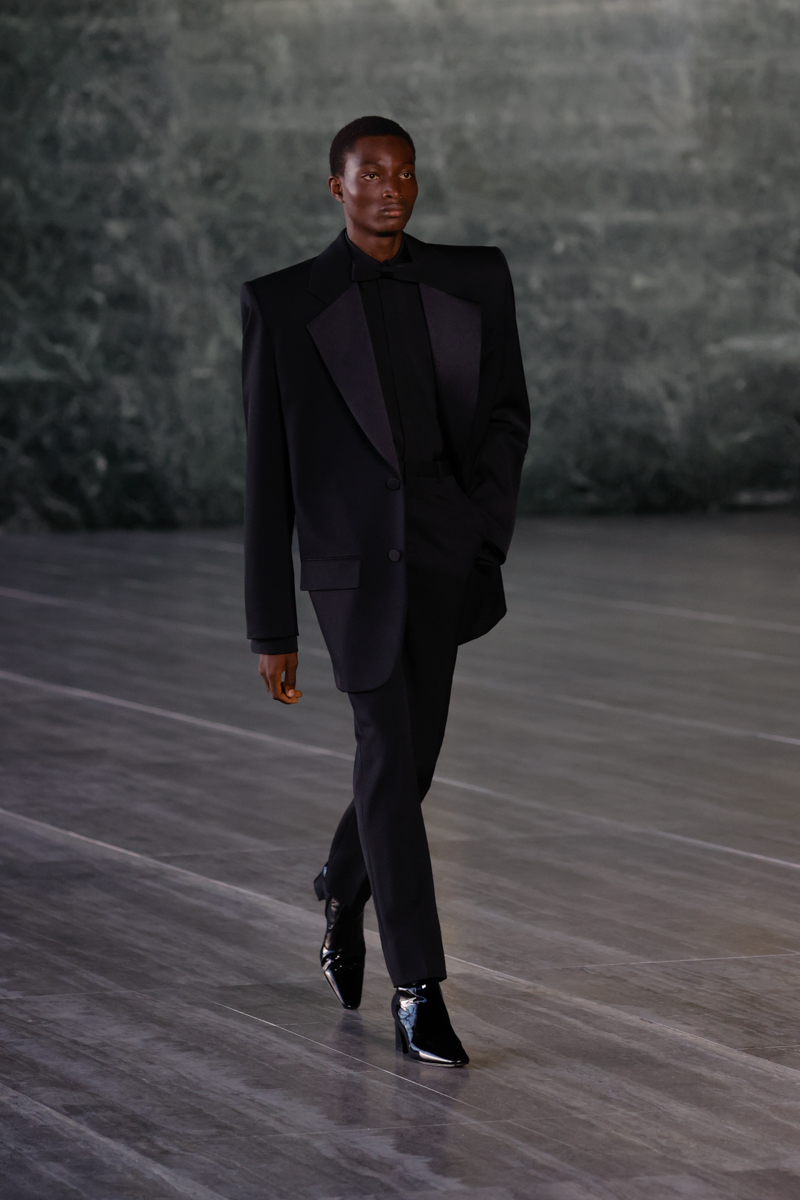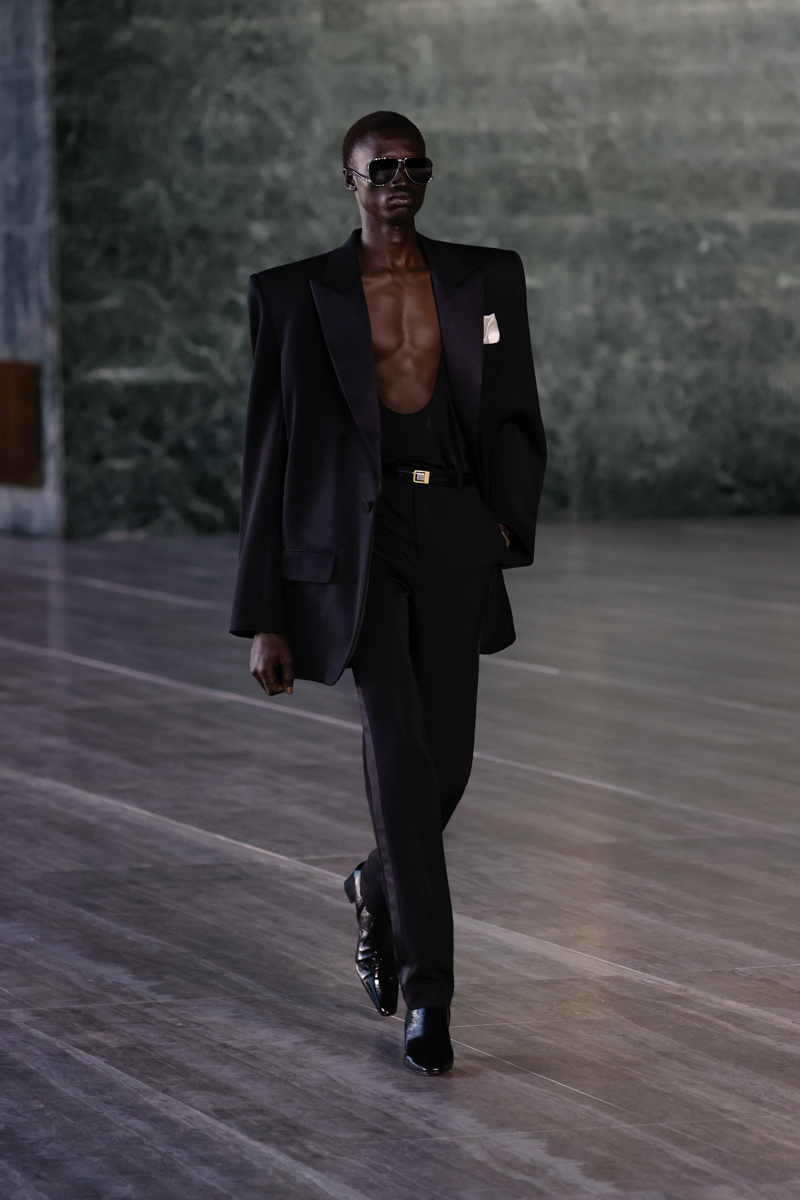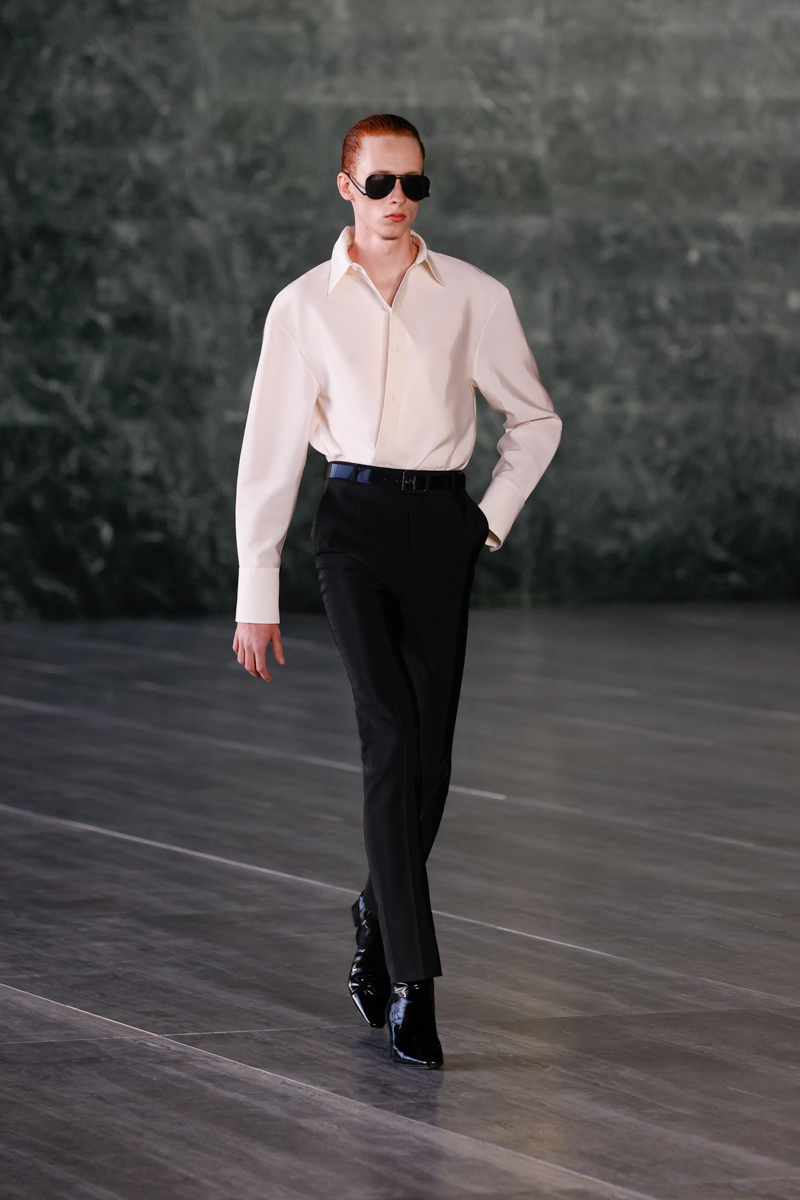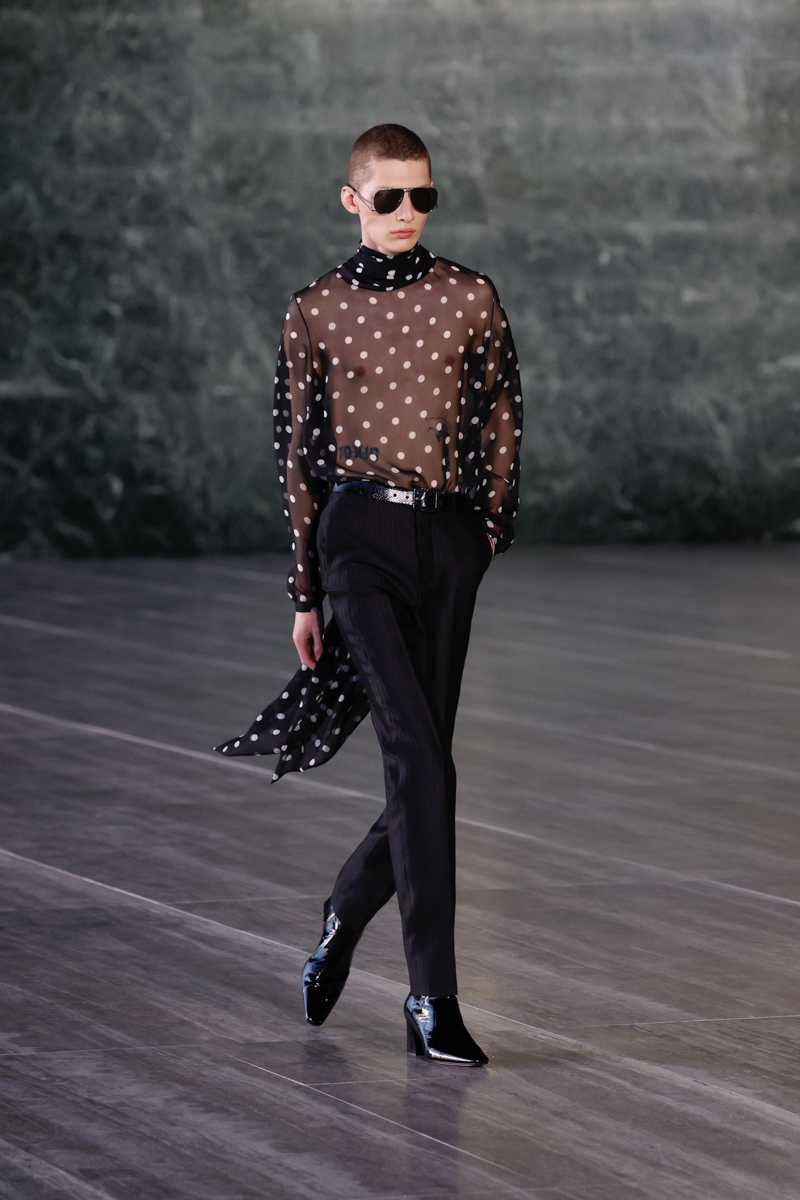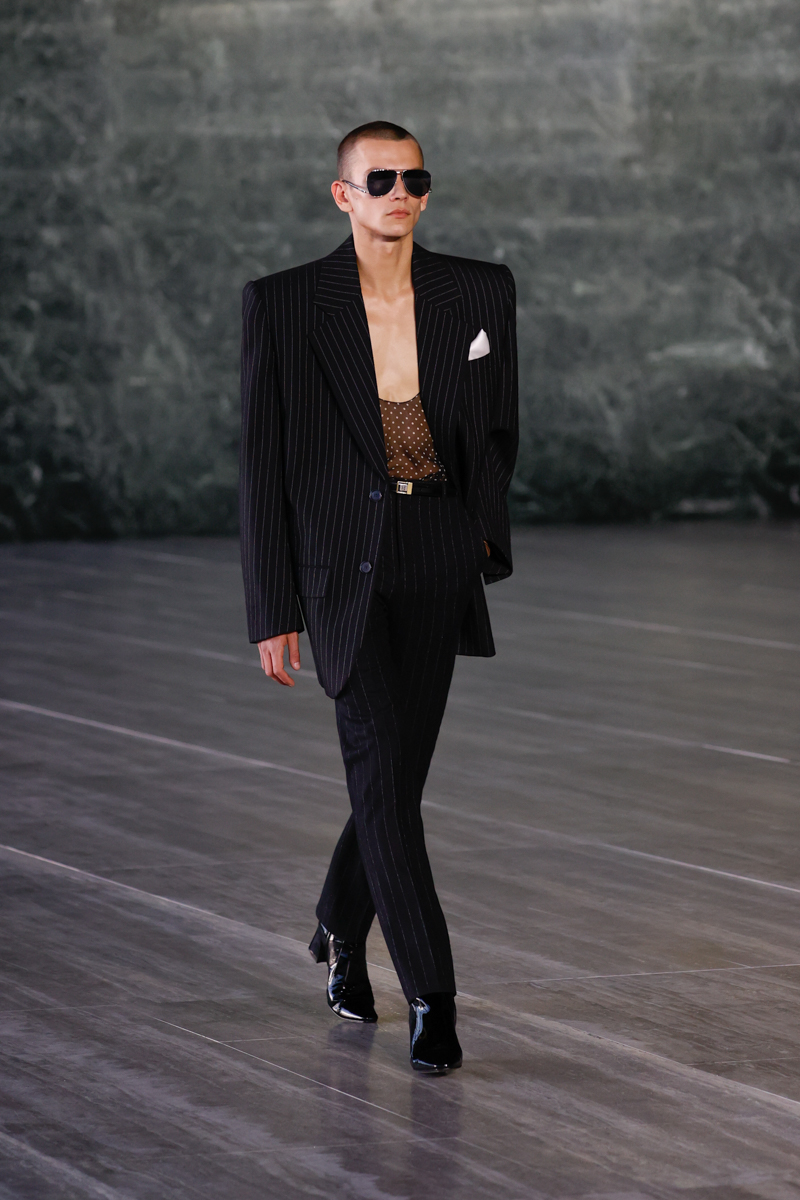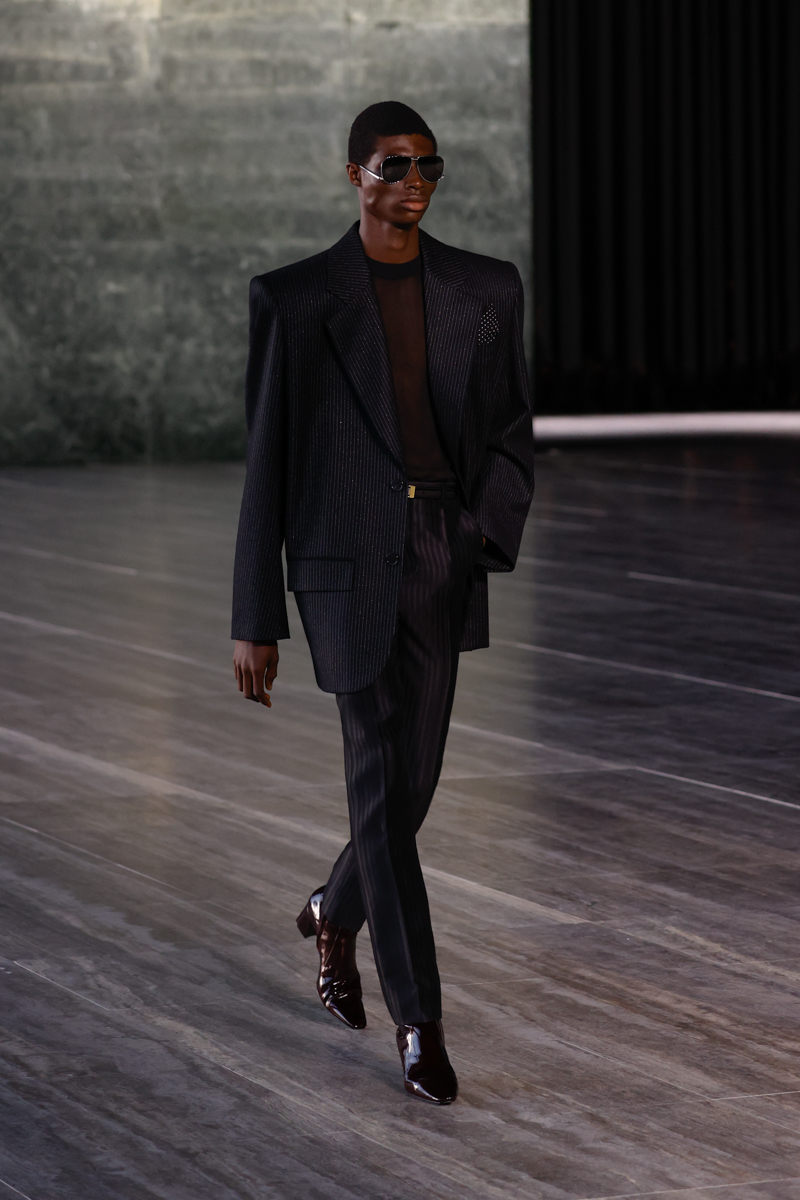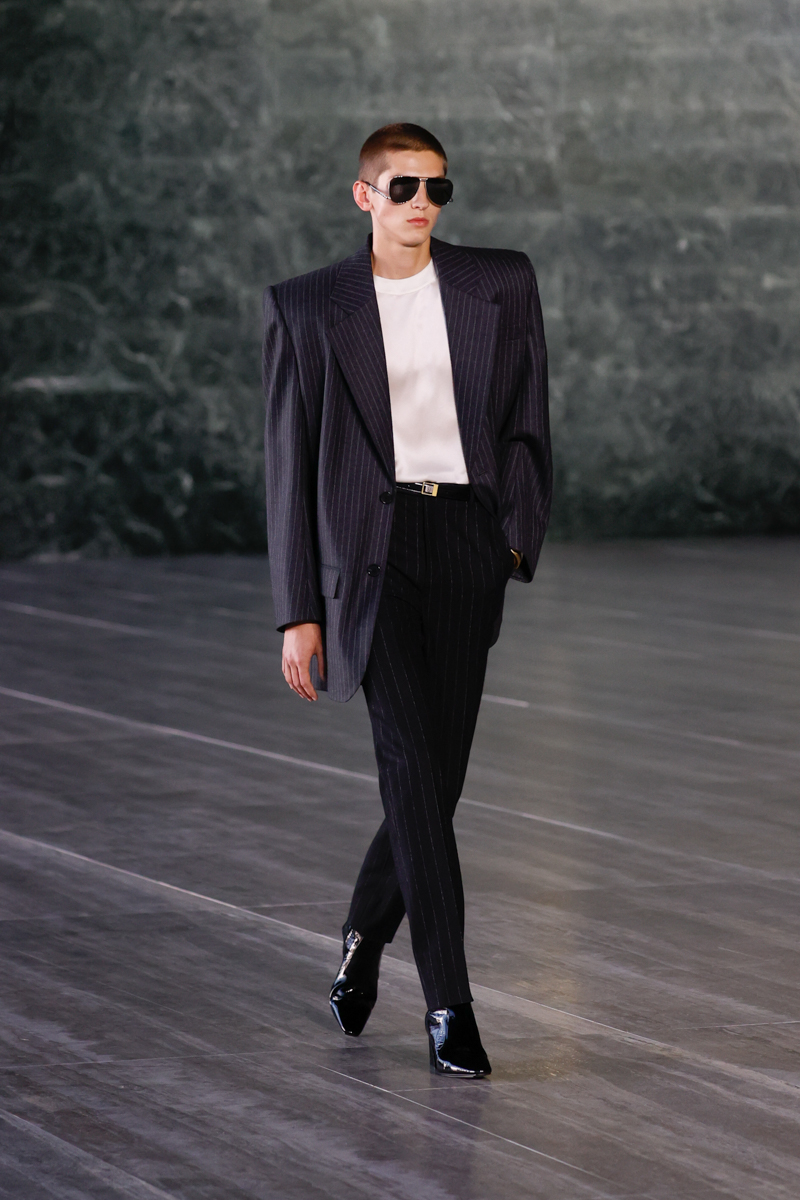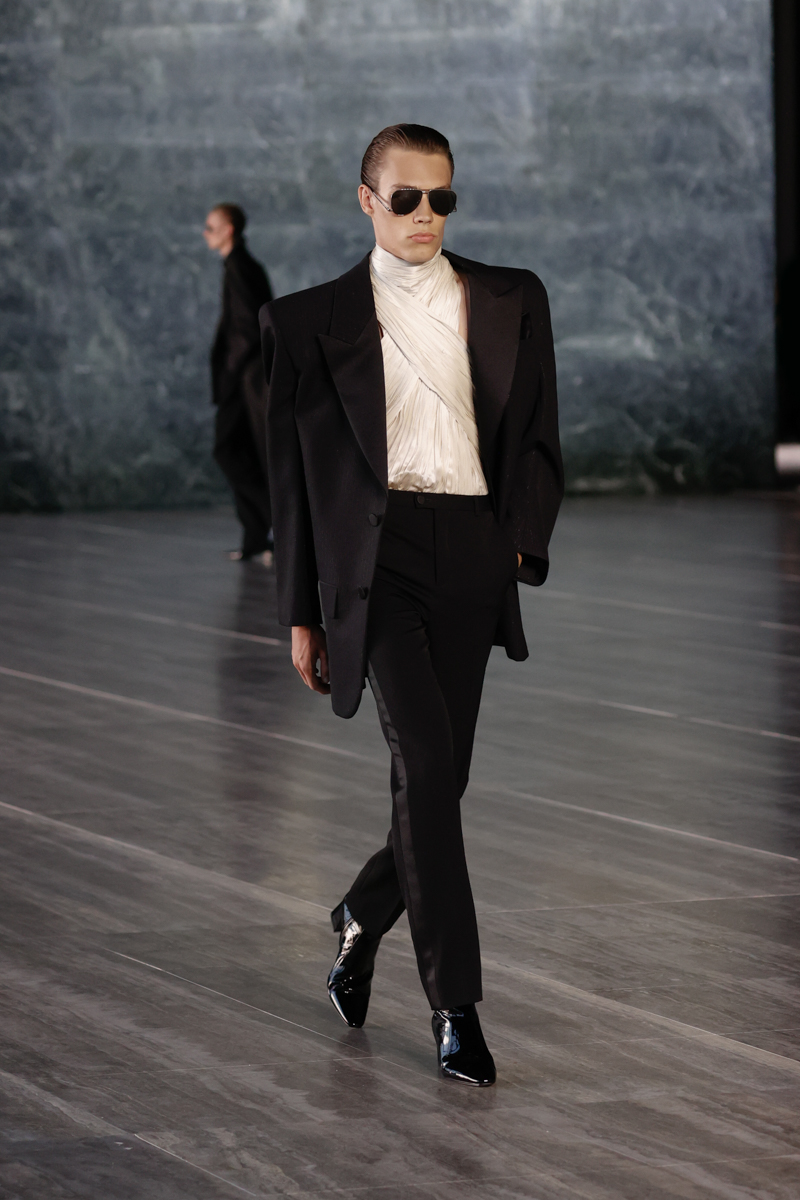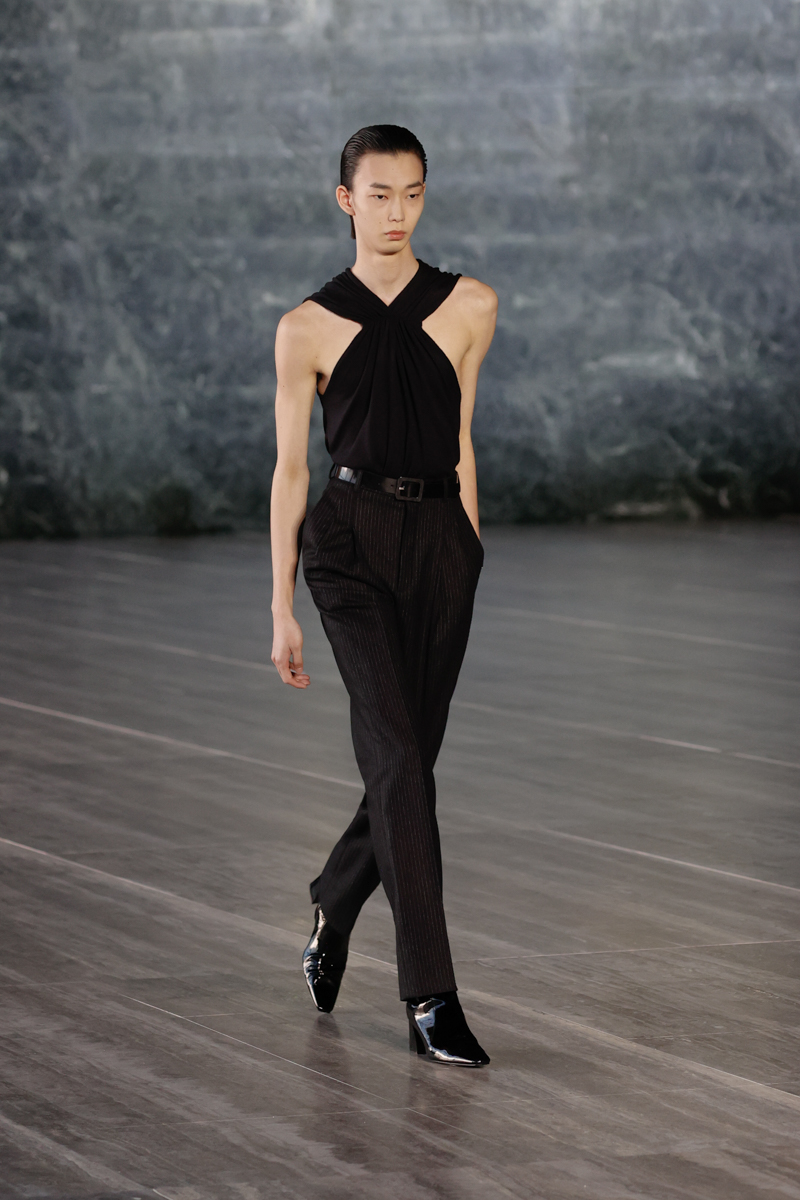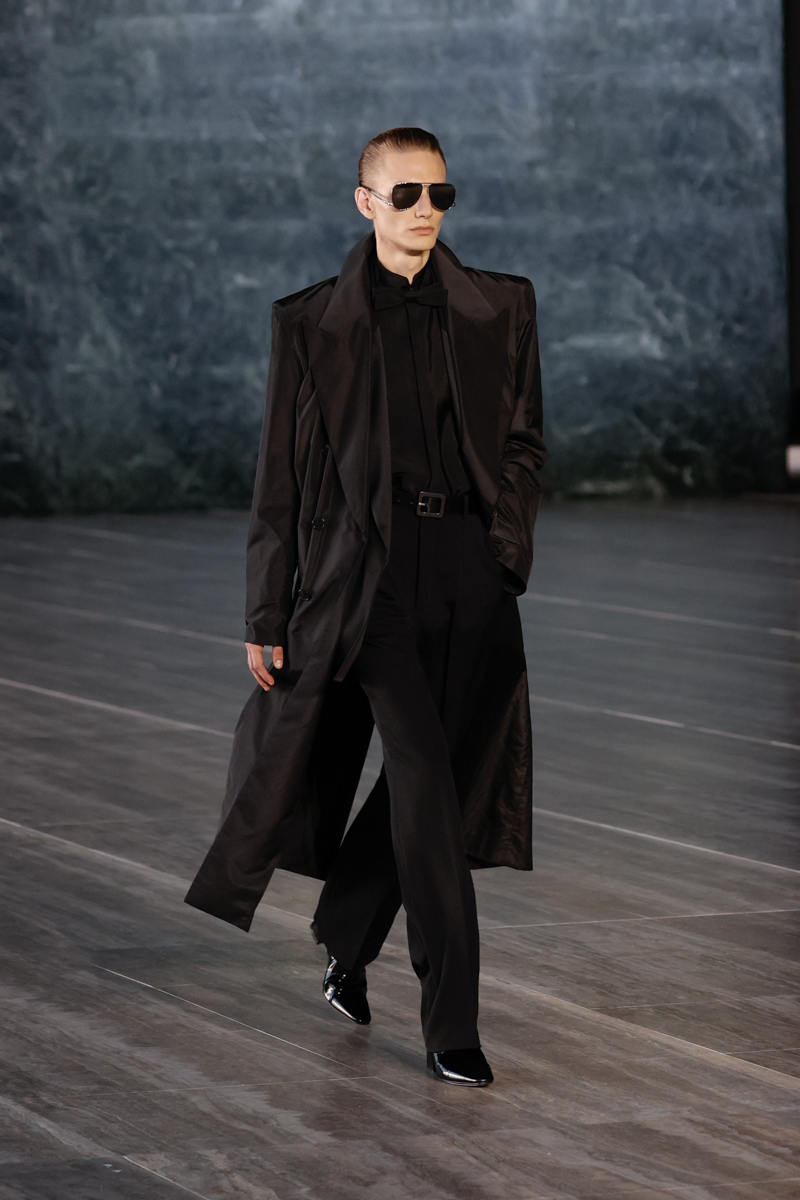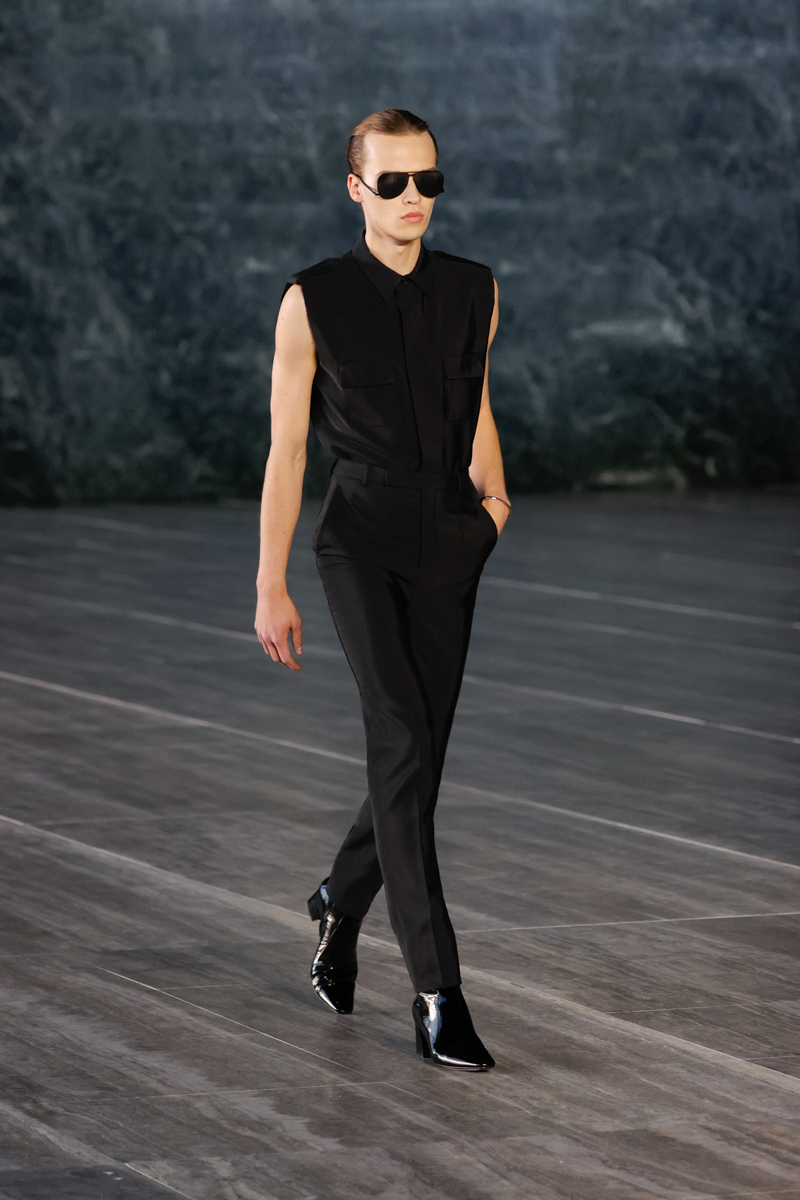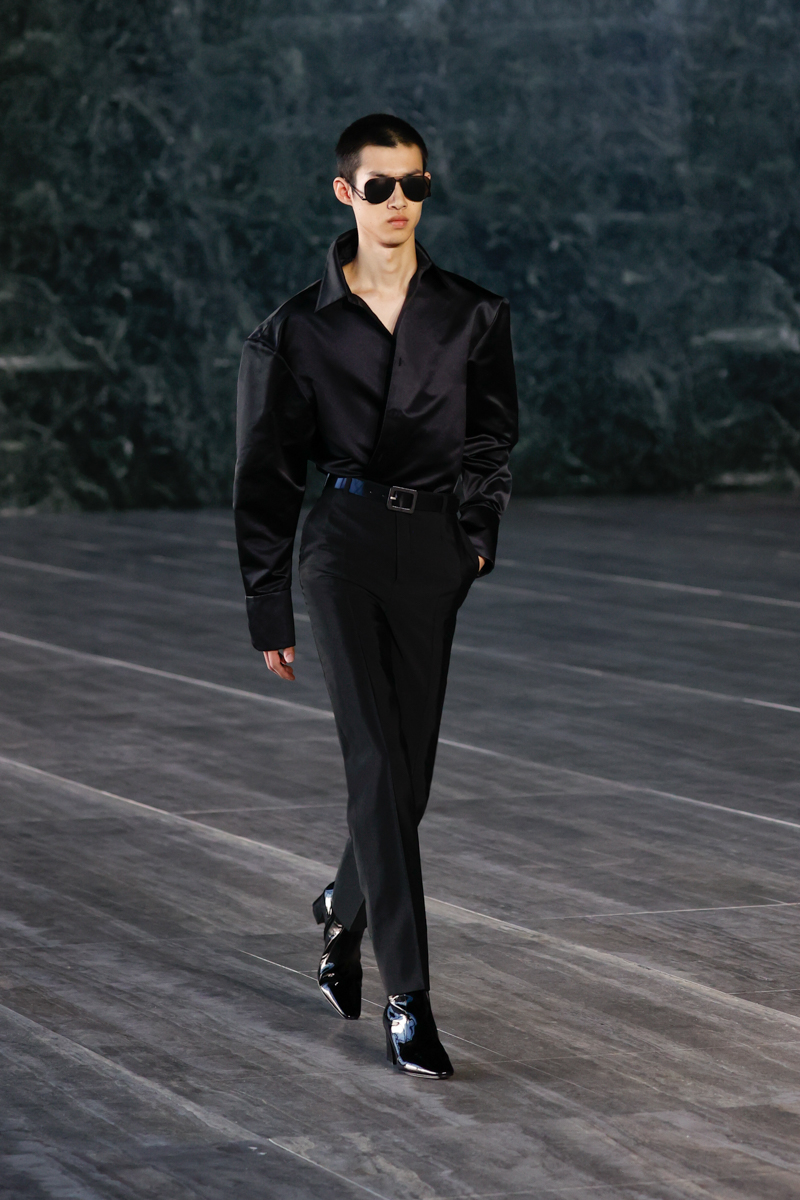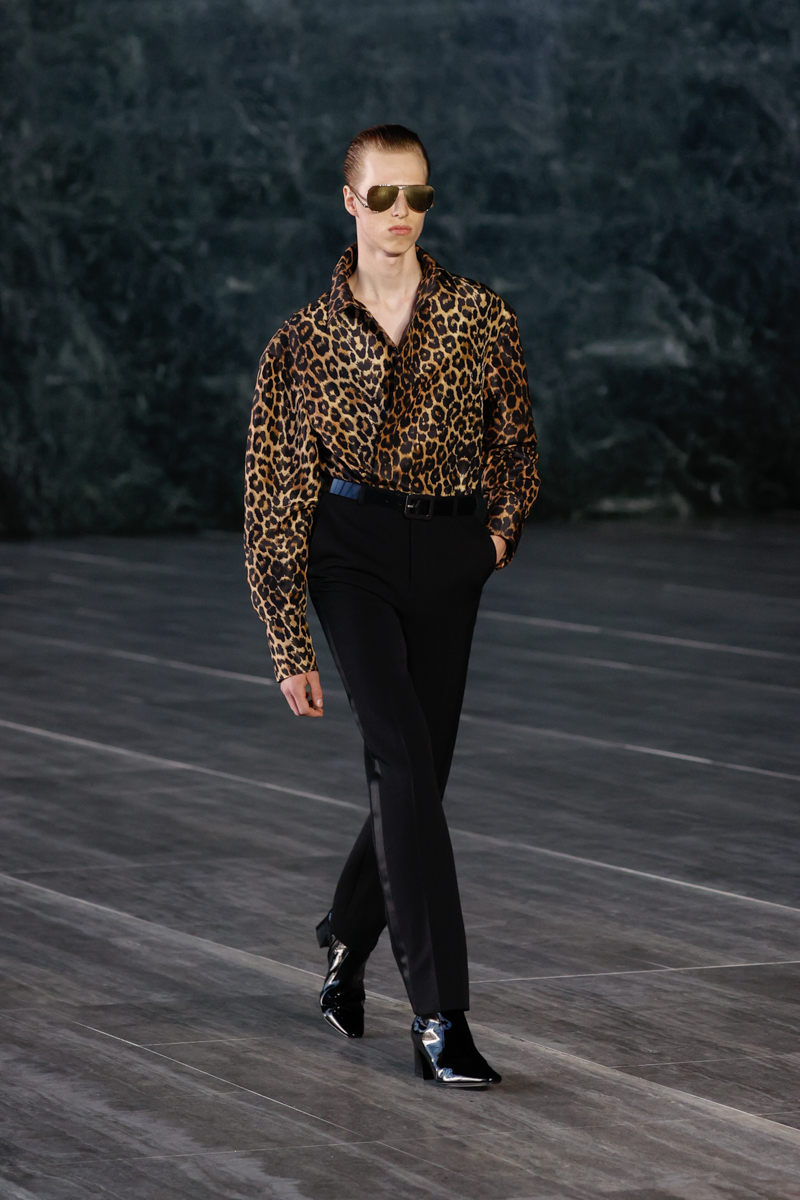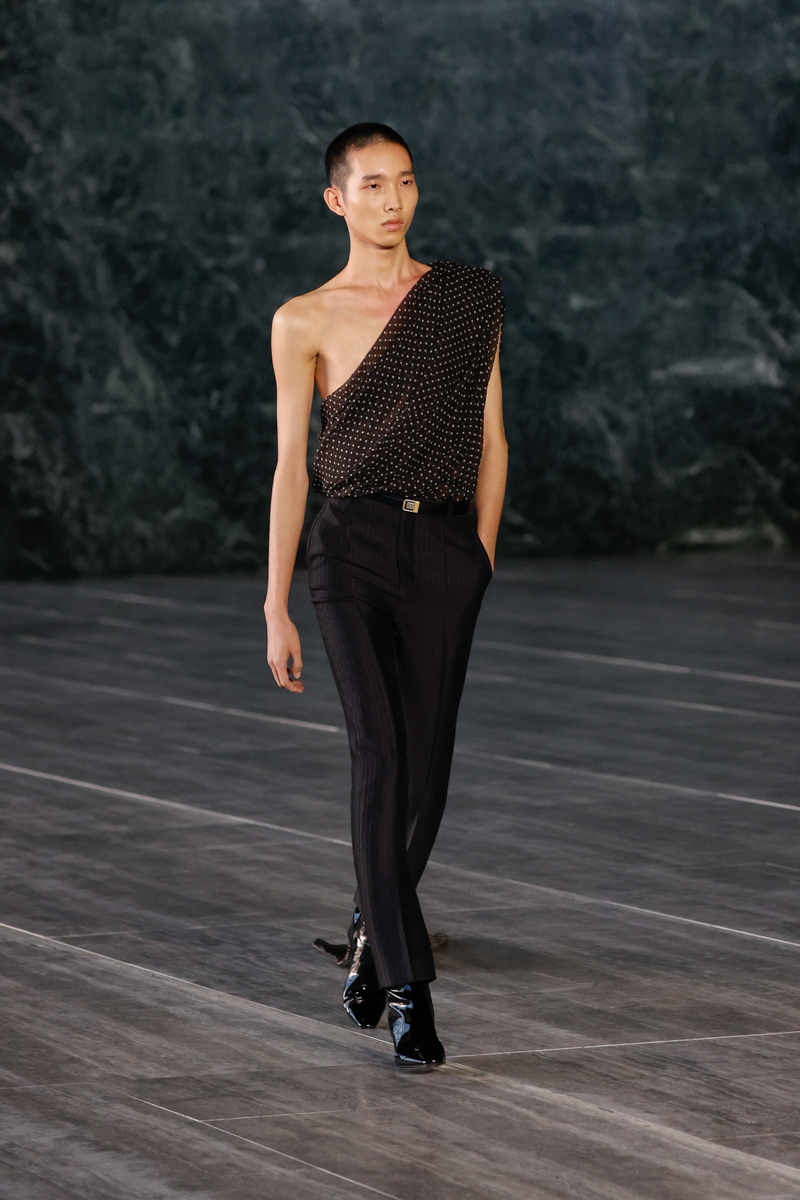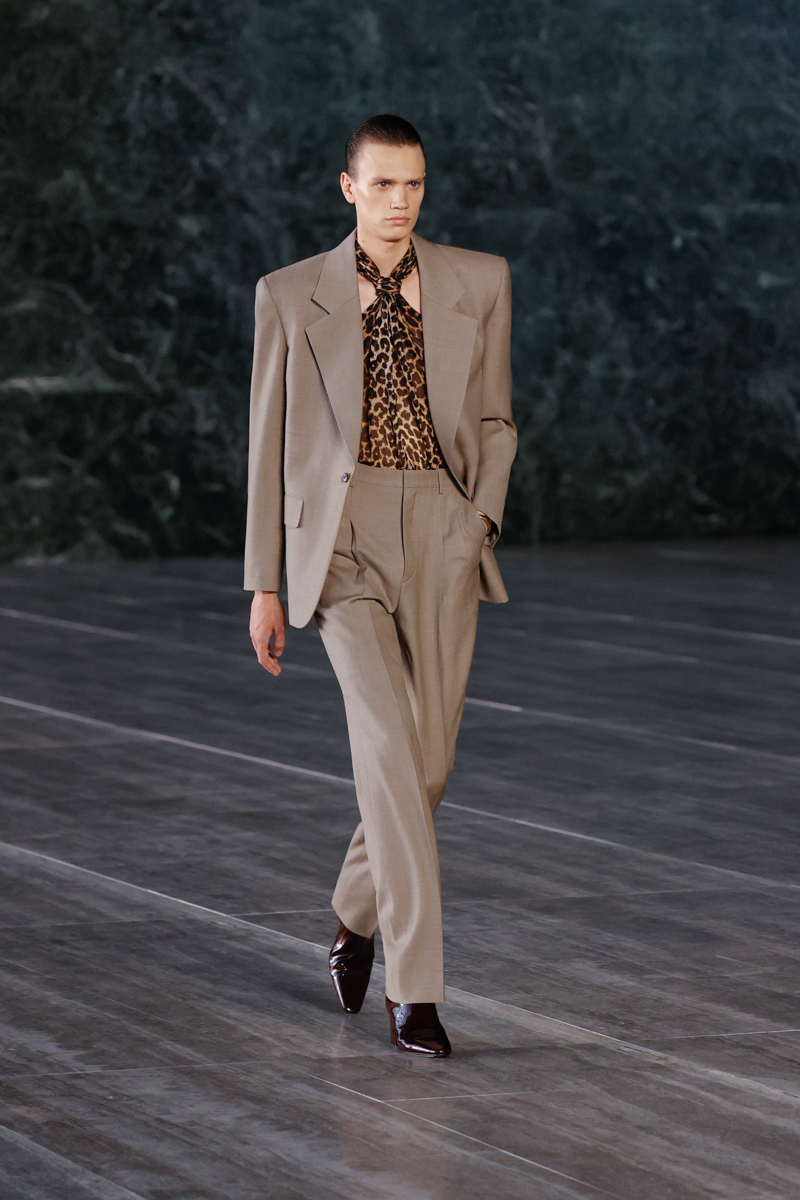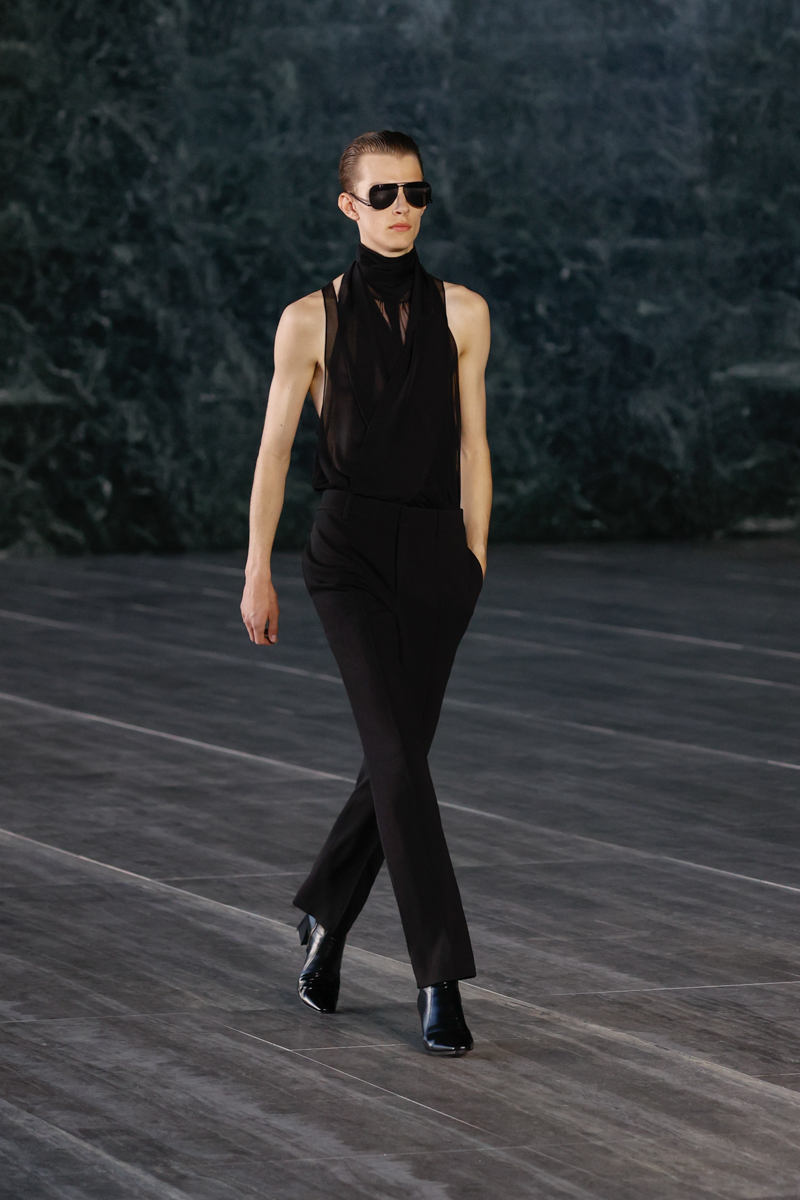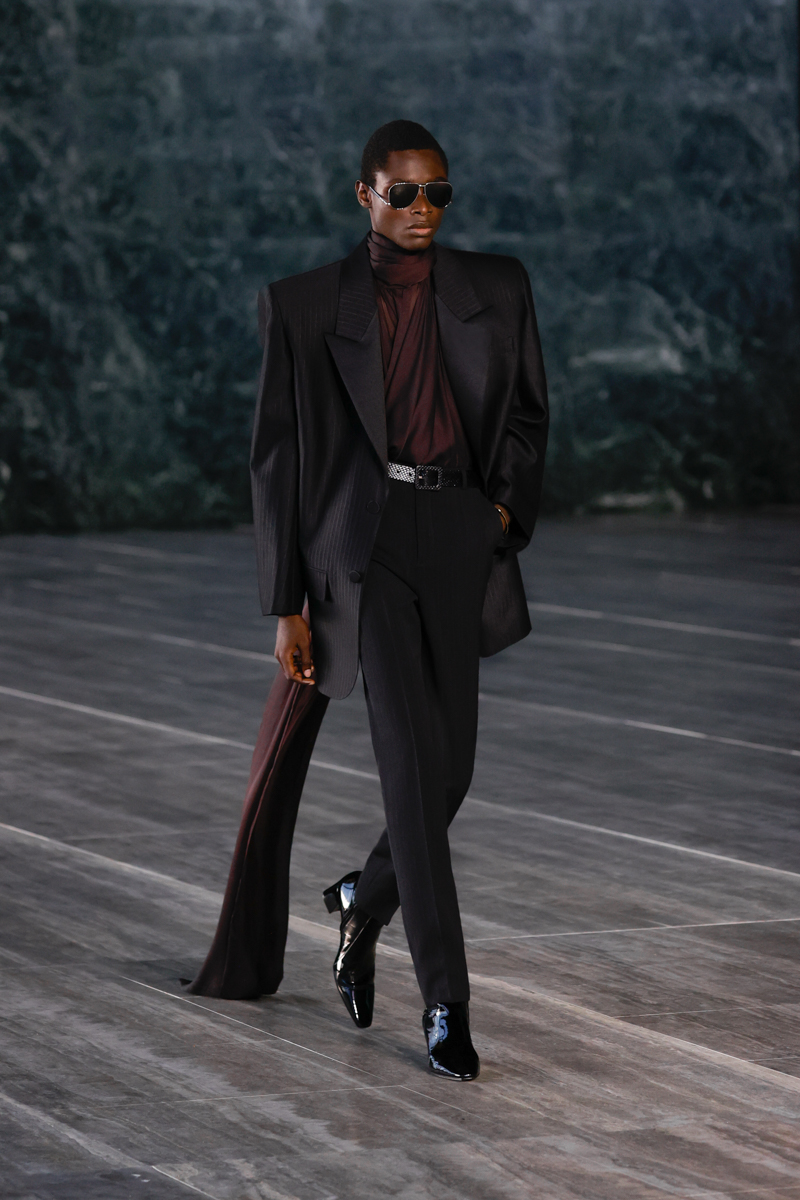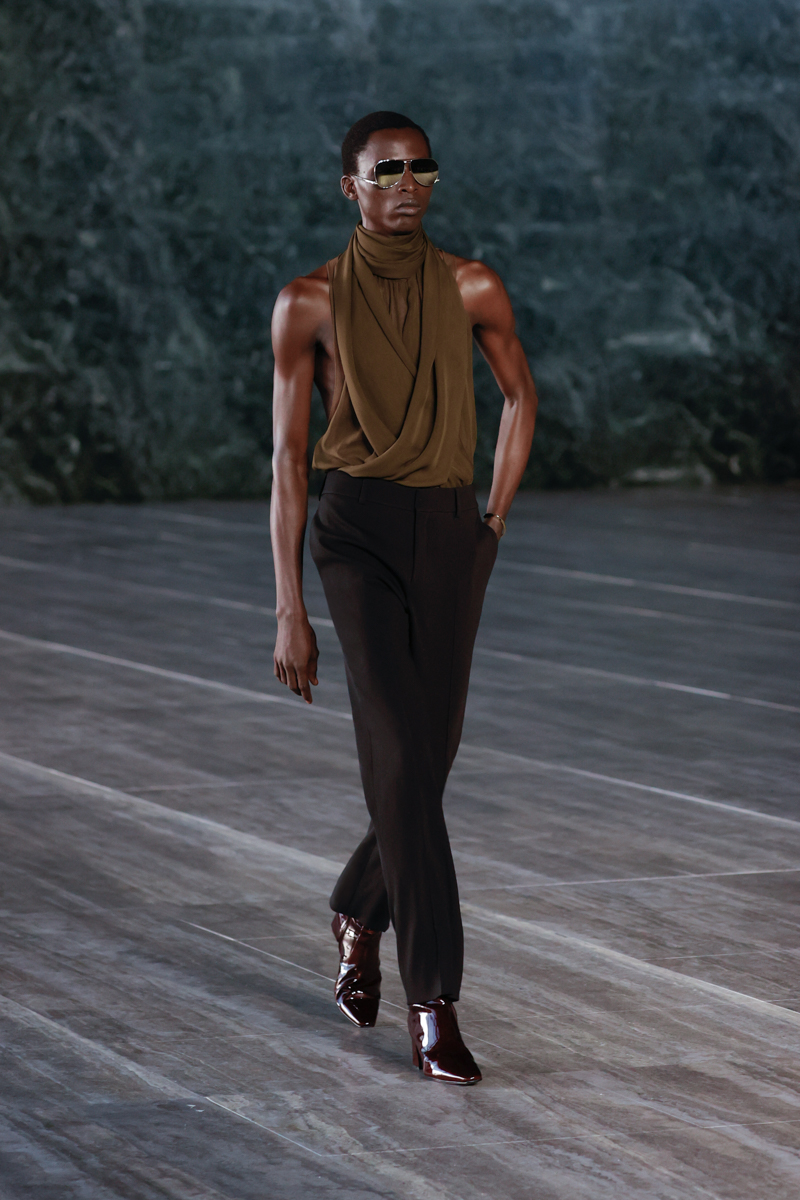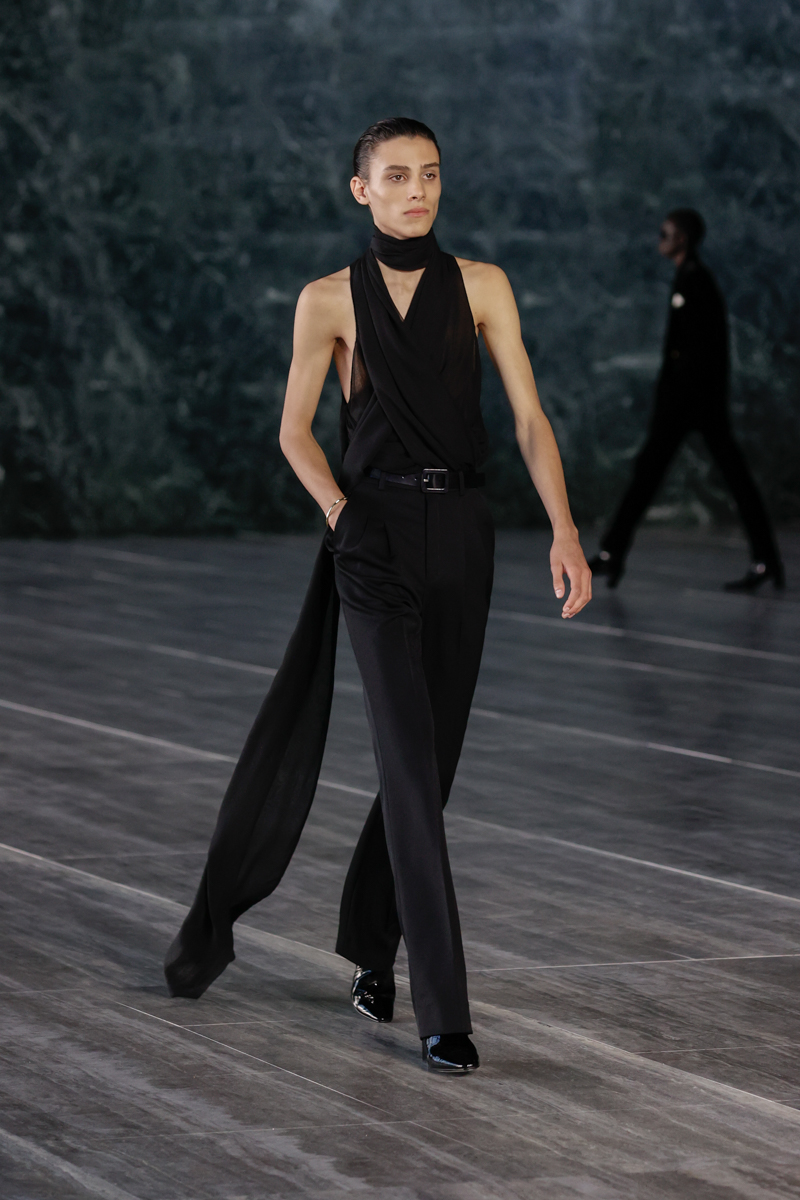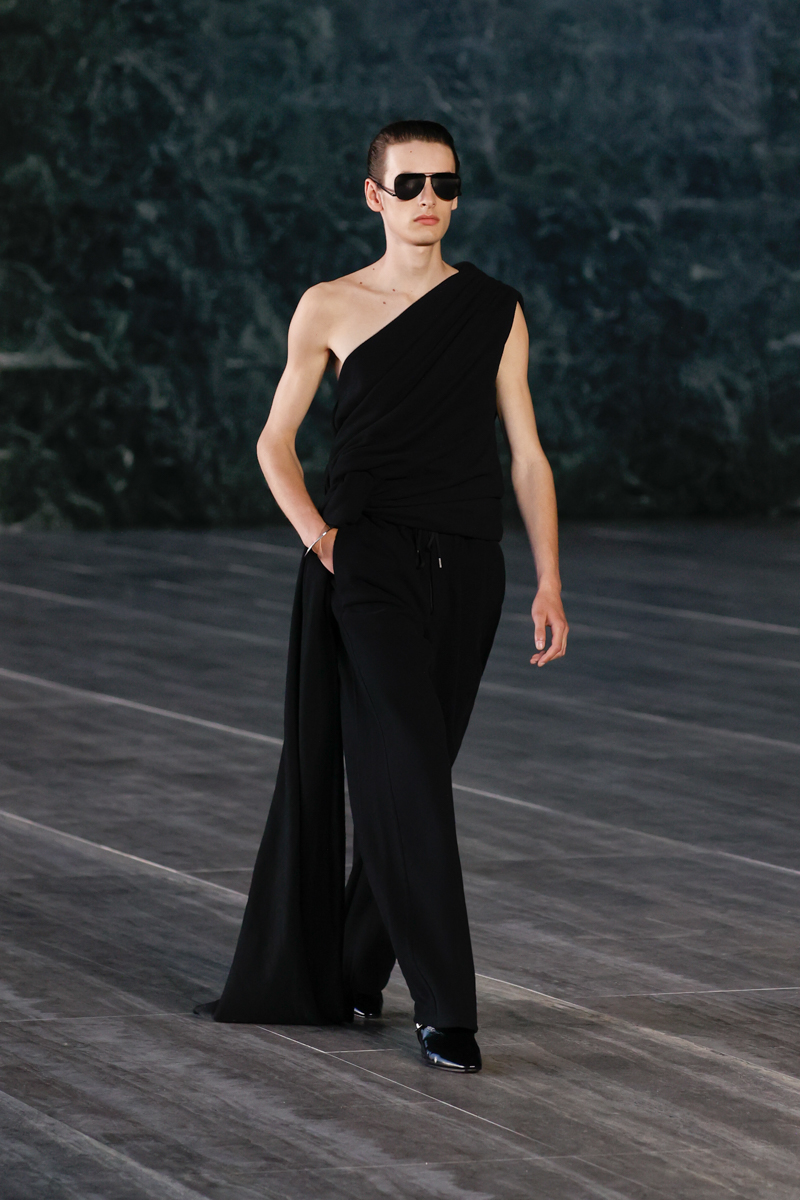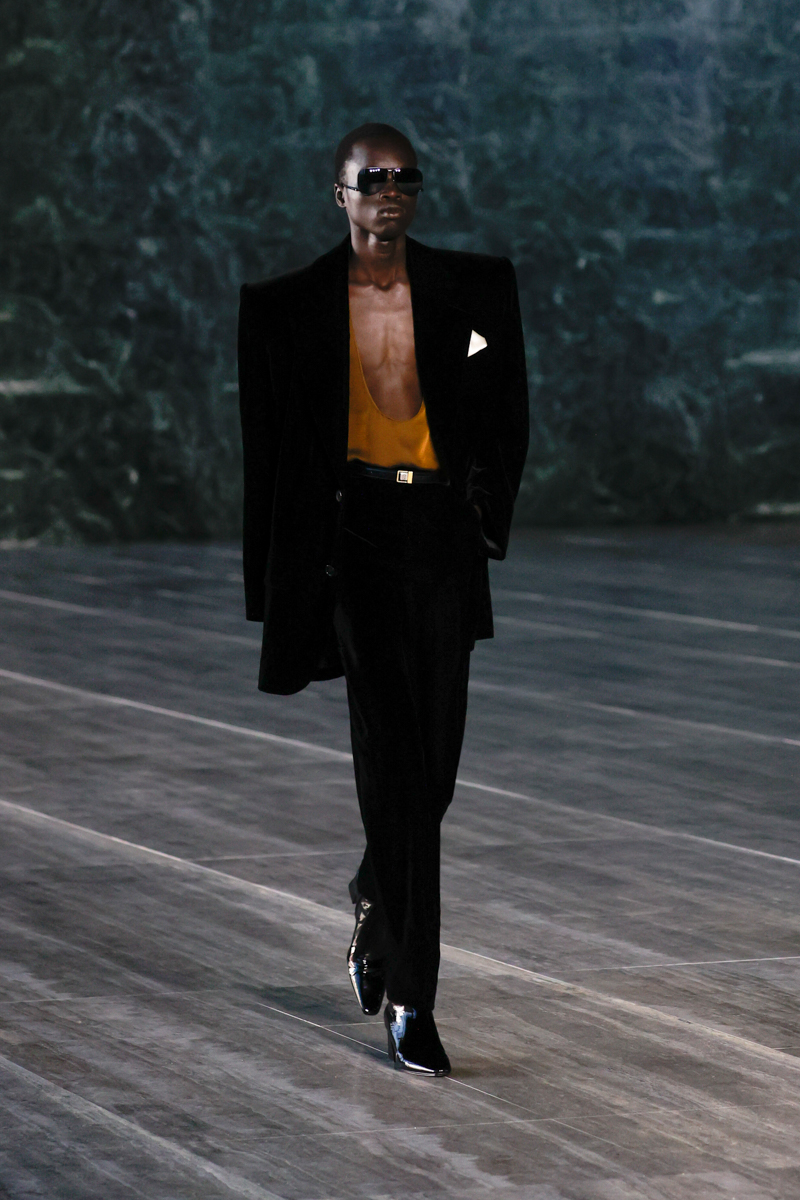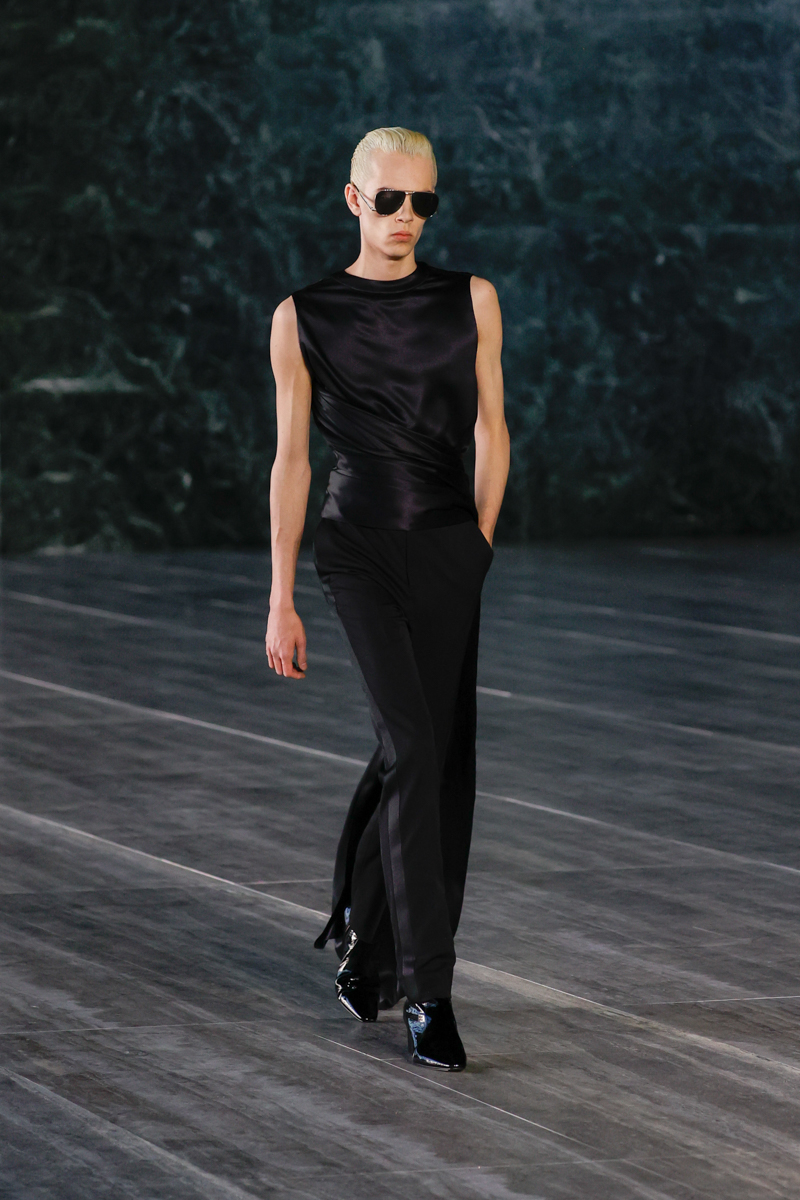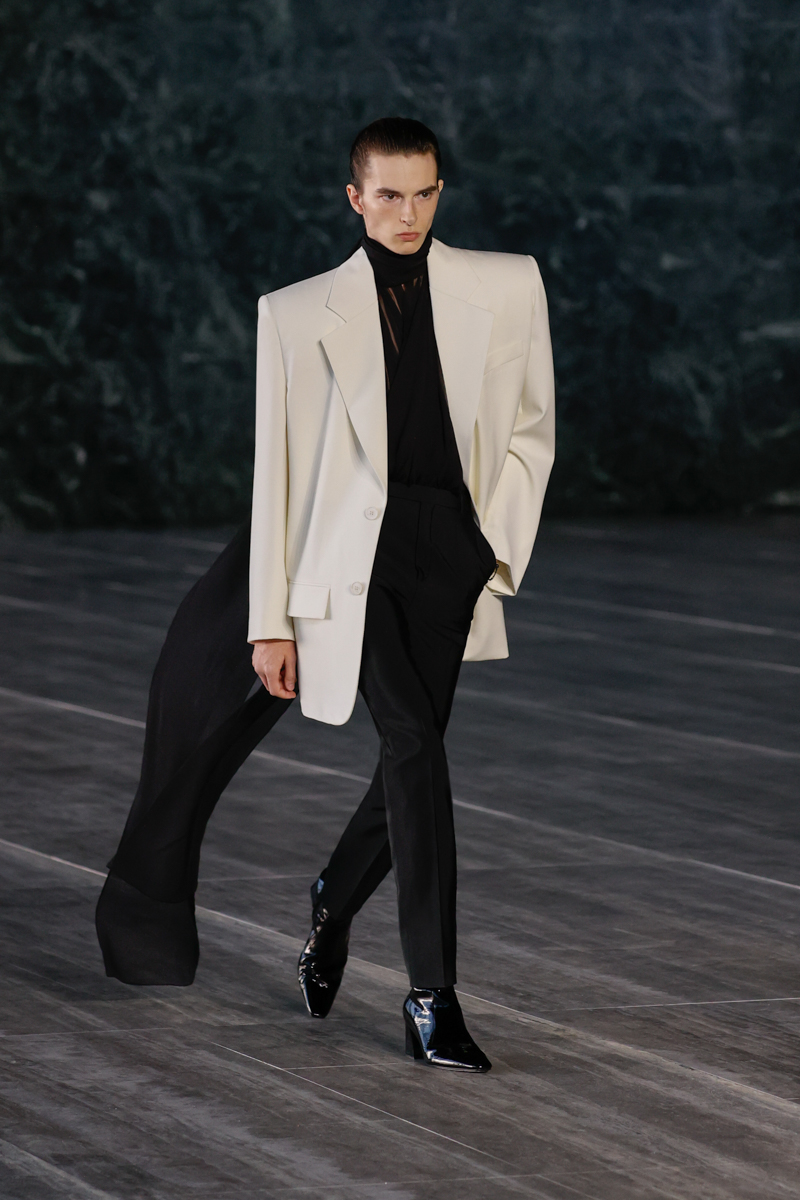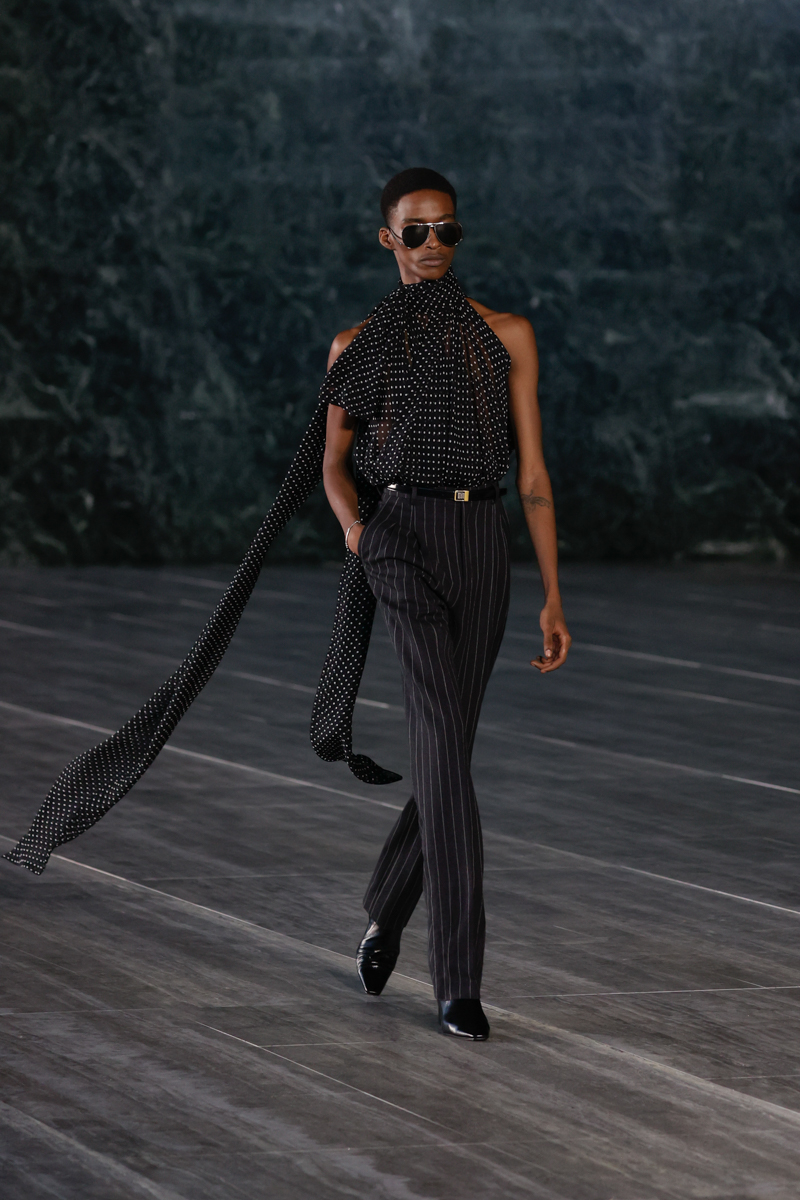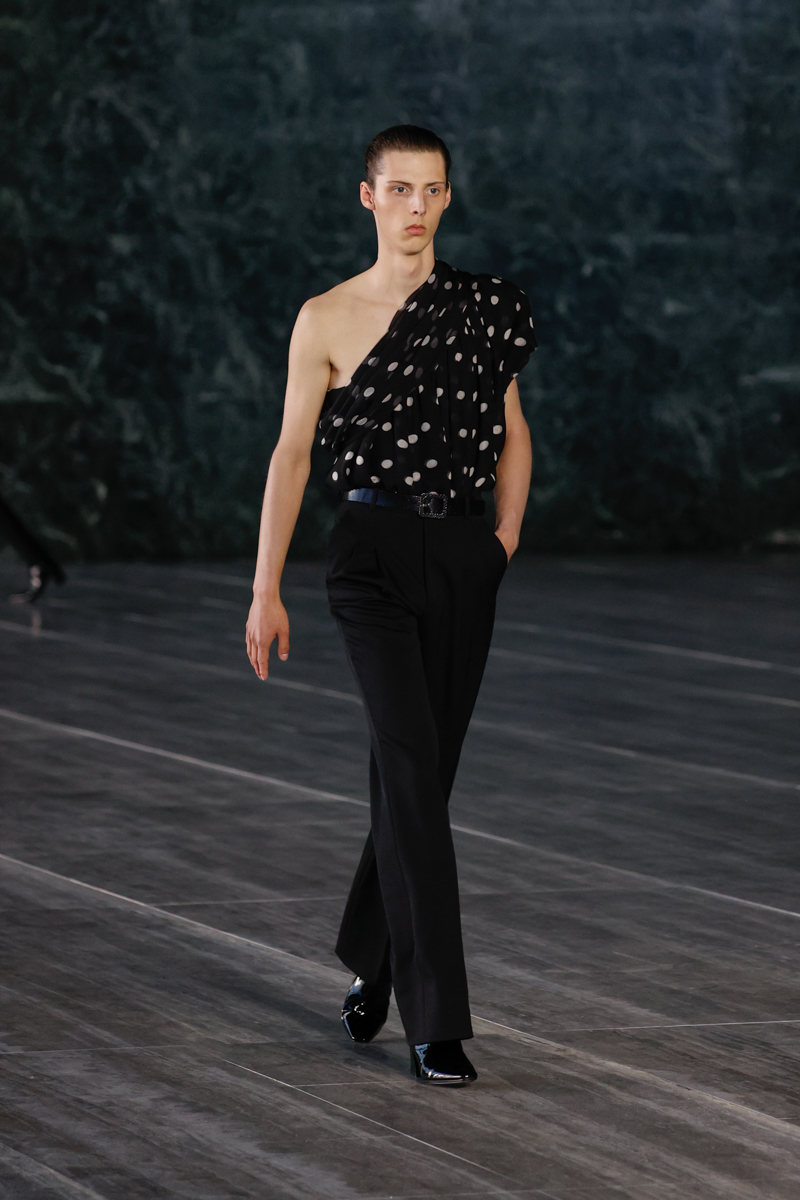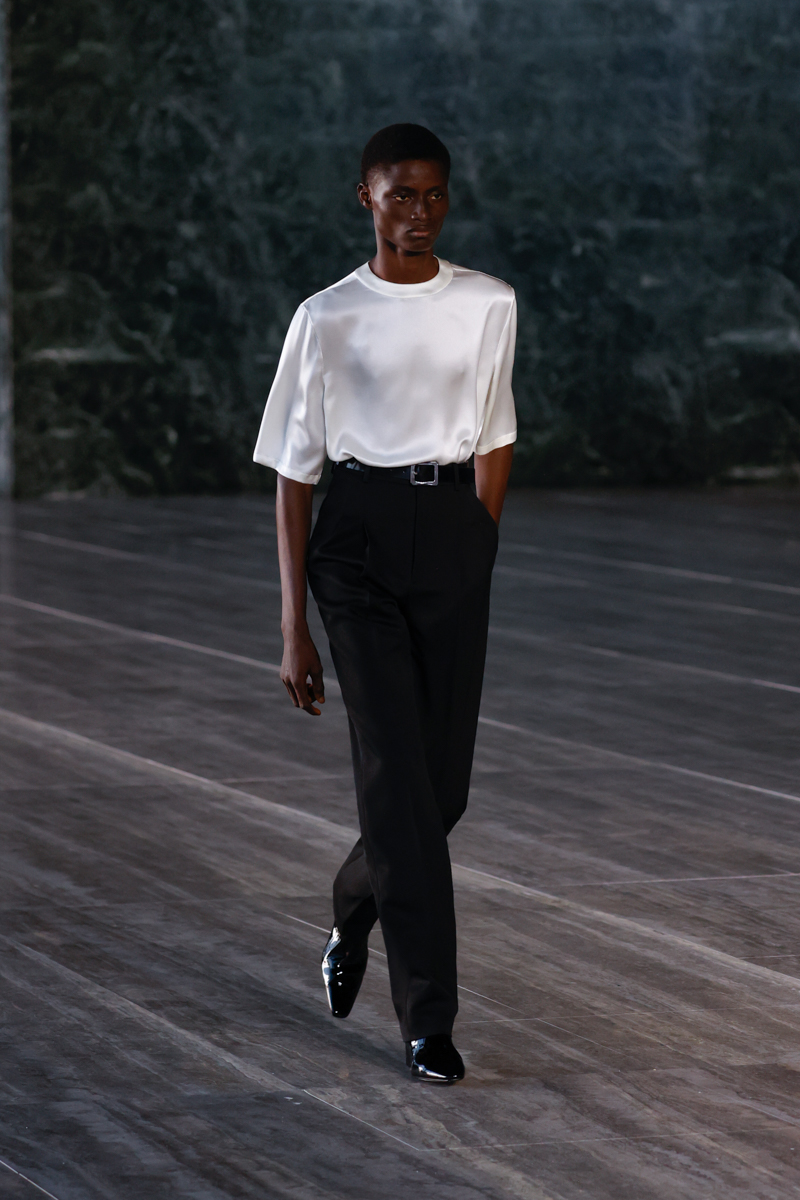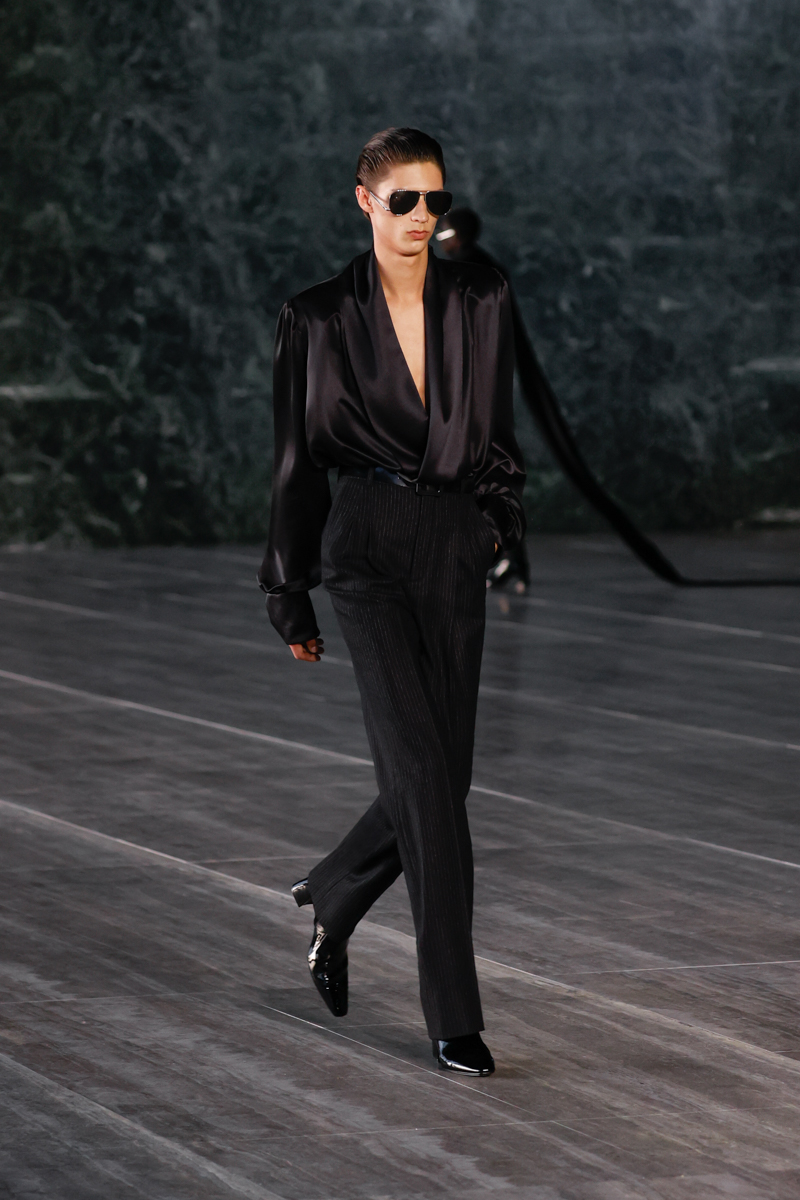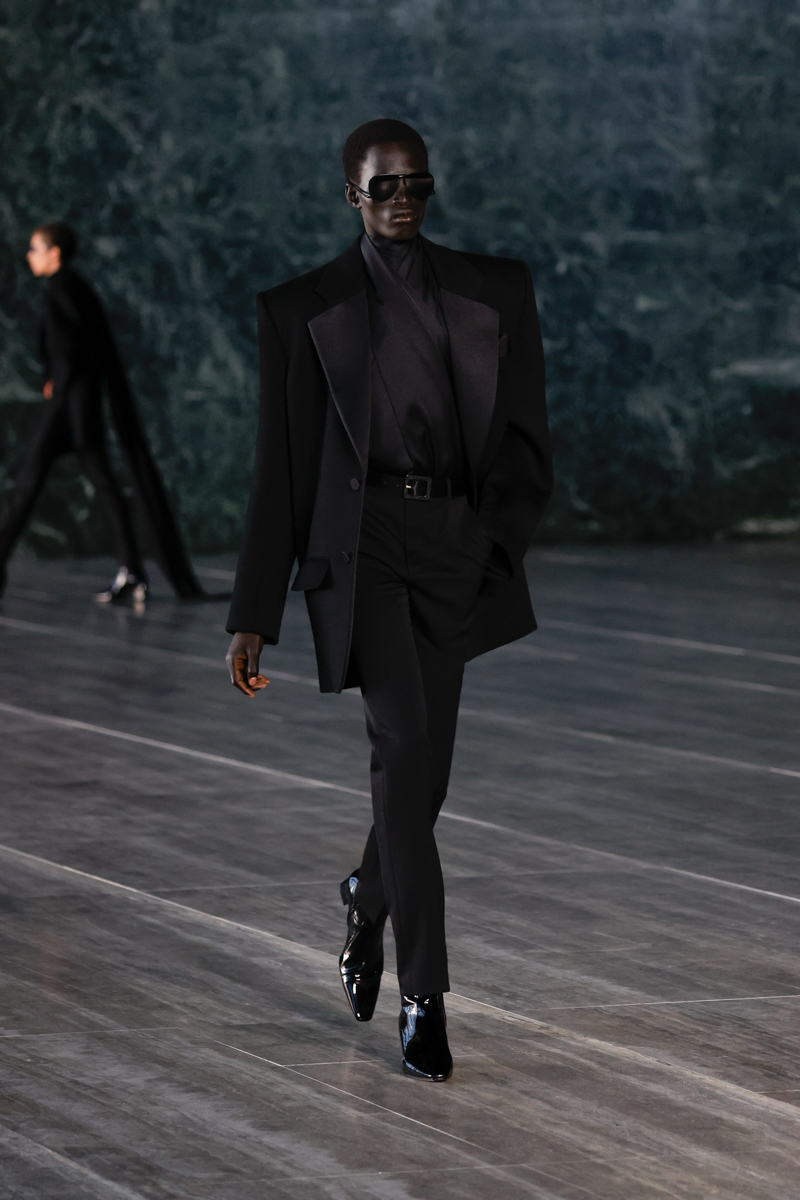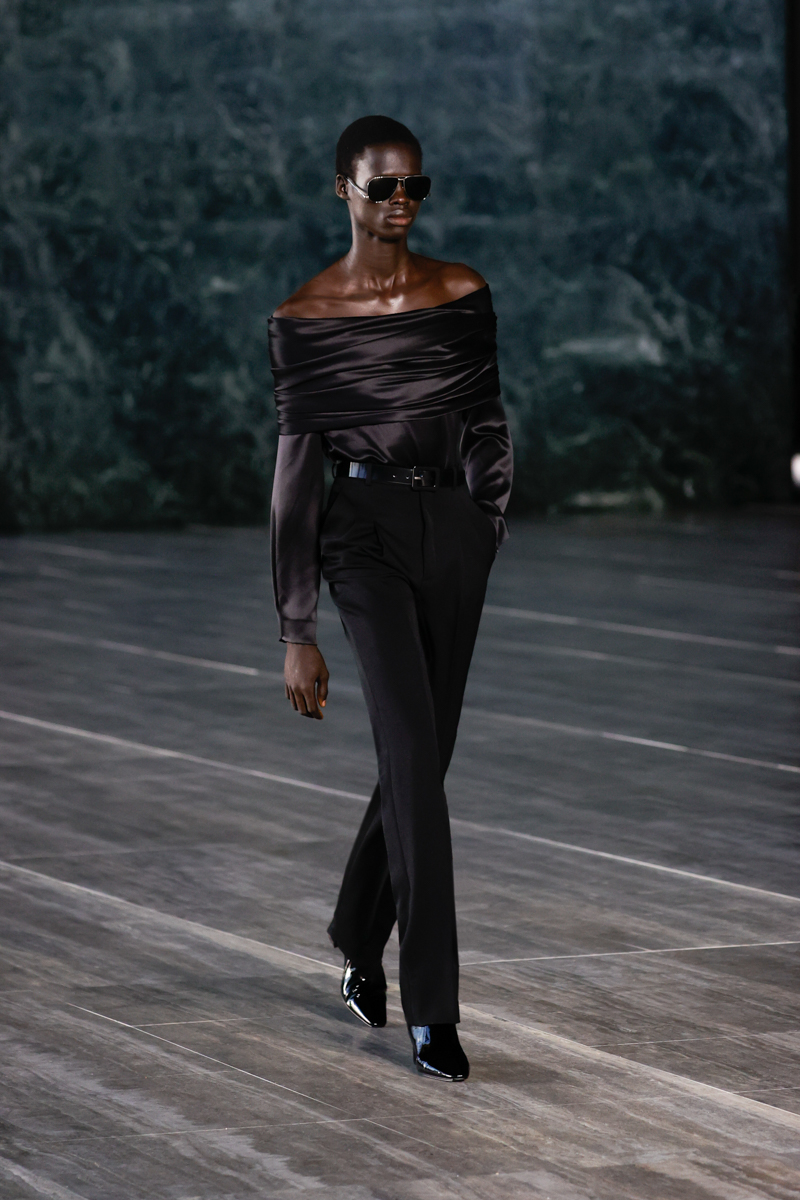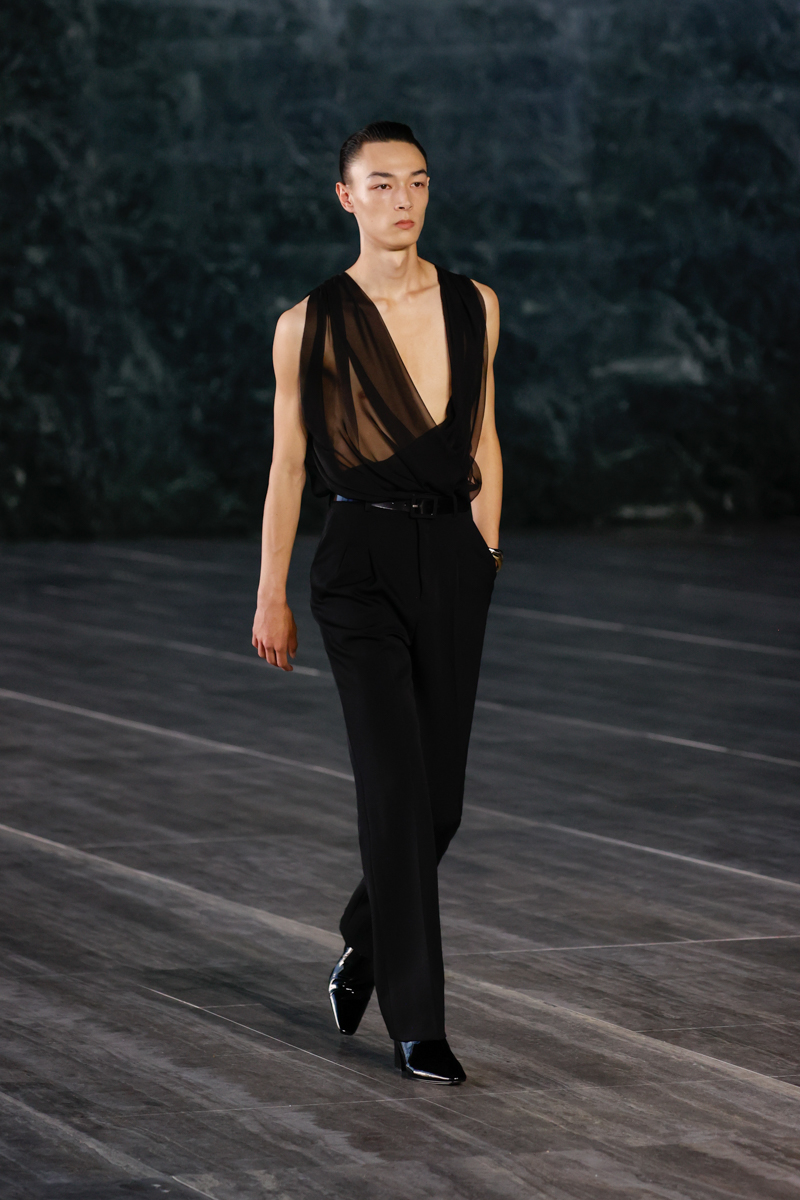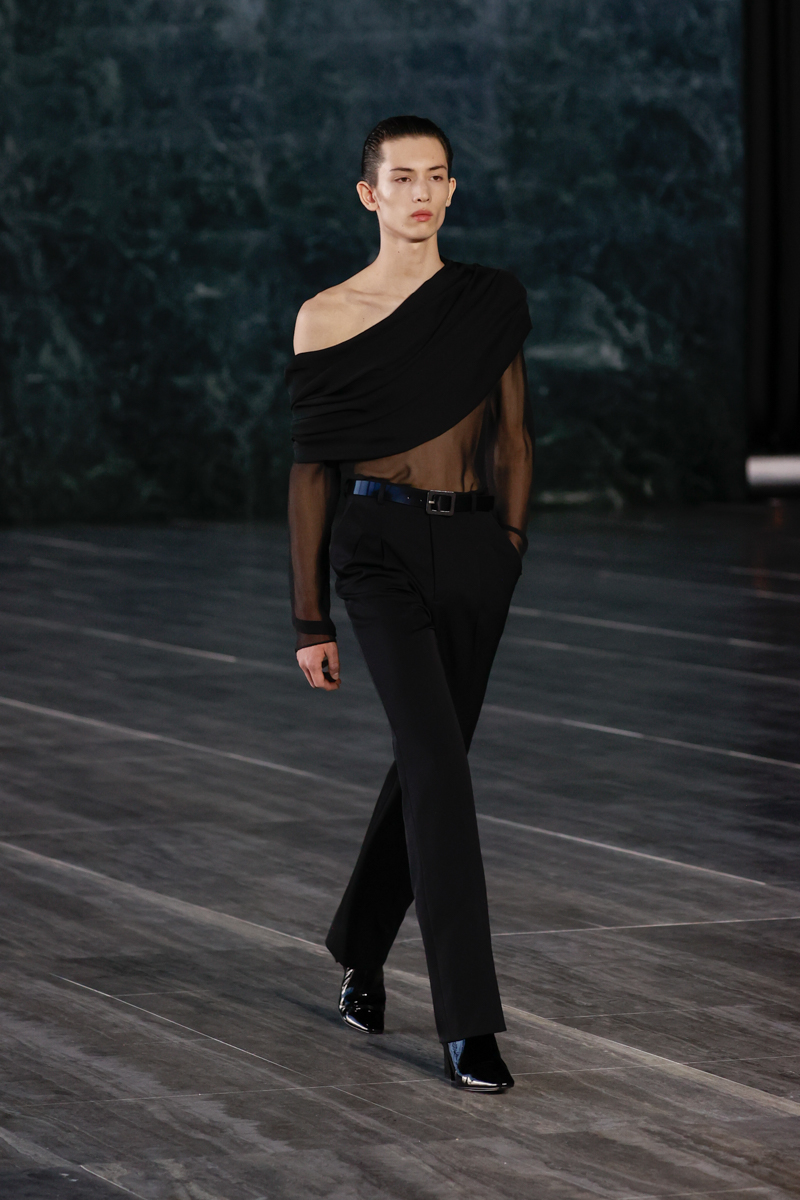Berlin isn’t the obvious choice for a big-ticket fashion spectacle. The German capital is often described as “poor — but sexy” and is more known for its anti-fashion counterculture than its appetite for luxury. And yet, Berlin is a world capital of cool; a magnet for creatives, partiers, intellectuals and DJs drawn to the city for its cheap rent and warehouse raves. What it lacks in money, it makes up for in attitude, which is exactly why Anthony Vaccarello decided to stage the latest of his globe-trotting menswear shows for Saint Laurent against the backdrop of the city. He started coming here as a student during his days studying in Brussels, drawn in by Berlin’s party scene, and though he barely saw the daytime during those visits, it stayed with him ever since.
Held at the glass-and-steel upper pavilion of the Neue Nationalgalerie, the last major project of German mid-century architect Ludwig Mies van der Rohe and home to Germany’s main gallery of twentieth-century art, the setting for the show had all of the key Saint Laurent ingredients: sleek, spectacular, and extreme. Backstage, Anthony explained that he considers this show to be only his third menswear outing, despite having staged so many during his tenure. “It started from Marrakech,” he noted, referring to last summer’s men’s show in Morocco, which felt like a seismic volte-face at the time; like Anthony finally hitting his stride with menswear. The following show, held in Paris in January, was another blockbuster sequel. “Now that I feel very confident with what I’m doing for men’s, and I put it at the same level as the women’s, I was ready to come here and present it to this audience.”
The collection itself was another singular vision of razor-sharp silhouettes. It felt concise, clocking in at just 47 looks, and the show’s intimacy (only 300 guests; hardly any of them influencers) helped carve out a singular vision of the Saint Laurent man. “I like, now, that it’s more edited. There’s one message. I don’t like to give a bit of everything. When you leave the show, you have a clear silhouette in your mind,” Anthony explained. “I do it for people who work in fashion and really love fashion and love the brand for real. Not someone who goes to every show to wear what we told them to wear.”
There were references to David Bowie in his Thin White Duke era (stiff ivory satin shirt tucked into high-waisted cigarette pants, red hair slicked back), or even a tuxed-and-bowtied Marlene Dietrich in Morocco, the androgynous progenitor of gender-fluidity which first inspired Yves to design Le Smoking in 1966. Throughout, there was an artful blend of exaggerated perpendicular tailleur, complete with whippet-thin trousers and Cuban-heeled patent boots, and a softer sense of flou via draped chiffon blouses, gossamer halter tops, polka dot pussy bows with ballgown-length trains floating behind. Twinky, to say the least, but also an overdue reversal of Saint Laurent’s historic androgyny, which typically borrowed from the boys, for the girls. Now, it’s the other way around — polka dots, leopard prints, diaphanous bows et al. And though other fashion houses have weighed in on the gender-fluidity phenomenon, it’s simply an intrinsic part of the furniture chez Saint Laurent.
“I don’t think about gender things,” Anthony shrugged, pointing out that he loves it when women shop the menswear, and vice versa. “I don’t do it because it’s cool to be gender fluid now. I do it because I like it like that. There’s no political message behind it. Monsieur Saint Laurent never did. Everything he did was very political but there was never a predisposition on something. And I think that’s cool. Everyone can interpret it in the way they want.”
What he was more vocal about was the sense of creative rebirth he had felt in the last year. Indeed, the show was a testament to Saint Laurent’s belief in its creative director, and in giving him time to experiment, take risks and, ultimately, develop his own signatures. The payoff has been great. Since the show in Marrakech last year, Anthony’s menswear collections have been selling strong and a hit on the red carpet, worn by a new generation of androgyne actors such as Steve Lacey, Manu Ríos, Eddie Redmayne and Evan Mock. That sense of rebirth also marked the soft launch of a new logo last year, its name written out in the sophisticated Cassandre-designed typeface (sans the Yves) that defined the post-Rive Gauche, pre-Slimane years of the house. “I mean, it’s been seven years that I’m here and I need to be excited and to see things differently,” Anthony clarified. “That logo makes more sense to me. It was like that before and that’s how it should be. It’s more elegant.”
Elegance is what Saint Laurent does best right now — case in point: that new logo was nowhere to be found in this collection. The other word that sums it up? Cinematic. After all, Saint Laurent is now a film production company, too. Last month, it debuted its first project at the Cannes film festival: Pedro Almódovar’s feature-length gay Western, Strange Way of Life, starring Ethan Hawke and Pedro Pascal. You can tell that working on it has rubbed off on the fashion. The official title of Anthony’s collection is Each Man Kills the Things He Loves, which derives from the song sung by Jeanne Moreau (and taken from Oscar Wilde) in a film adaption of the writer Jean Genet’s novel, Querelle de Brest. It was later filmed in 1982 by auteur Rainer Werner Fassbinder simply as Querelle. Et voilà. Therein lies the tension of this collection: Berlin’s uber-cool New German Cinema meets quintessential Parisian nouvelle vague. Esoteric, elegant, and — of course — incredibly chic.


